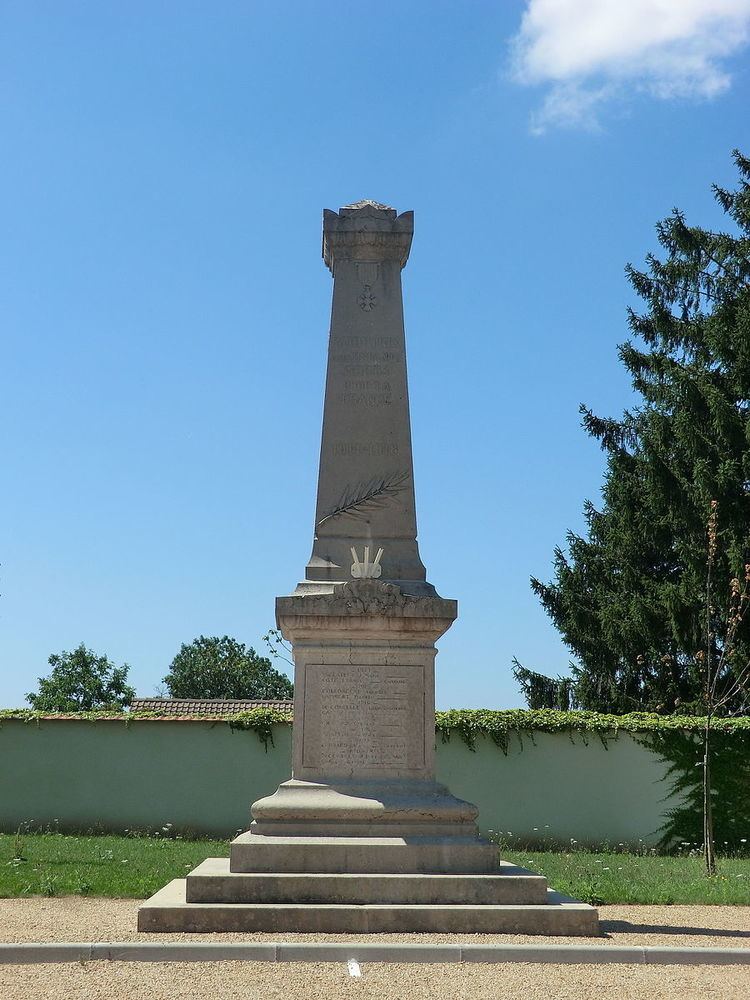Department Ain Area 5.22 km² Local time Tuesday 8:19 AM | Intercommunality Plaine de l'Ain Population 586 (1999) | |
 | ||
Weather 7°C, Wind S at 18 km/h, 84% Humidity | ||
Ambutrix (pronounced [ɑ̃.by.t̪ʁiks]) is a French commune in the Ain department in the Auvergne-Rhône-Alpes region of eastern France.
Contents
- Map of Ambutrix France
- Geography
- Climate
- History
- Administration
- Demography
- Lordship and Castle of Verneaux
- Sites and monuments
- Festivals
- References
Map of Ambutrix, France
The inhabitants of the commune are known as Butrians or Butrianes.
Geography
Ambutrix is located some 2 km south-west of Amberieu-en-Bugey and some 40 km north-east of Lyon. It can be accessed by road D1075 from Saint-Denis-en-Bugey in the north which runs south though the heart of the commune and continues past Charveyron. There is also road D408 coming from the west, crossing the D1075 and continuing to the village then south to Vaux-en-Bugey. There are a number of small country roads in the commune. The commune consists mostly of farmland with forest to the west and particularly in the east. A railway runs through the commune from Saint-Denis-en-Bugey to Lagnieu in the south.
Le Buizin stream runs north through the commune and the village to join the Albarine river to the north.
Climate
Weather Data for Amberieu-en-Bugey
History
The commune takes its name from the presence of Celtic people called Ambarri in the region.
Administration
List of Successive Mayors of Ambutrix
(Not all data is known)
Demography
In 2009, the commune had 660 inhabitants. The evolution of the number of inhabitants is known through the population censuses conducted in the town since 1793. From the 21st century, a census of municipalities with fewer than 10,000 inhabitants is held every five years, unlike larger towns that have a sample survey every year.
Sources : Ldh/EHESS/Cassini until 1962, INSEE database from 1968 (population without double counting and municipal population from 2006)
Lordship and Castle of Verneaux
Sites and monuments
Festivals
La Vogue is held on the first weekend of September and is organized by the conscripts of the village.
